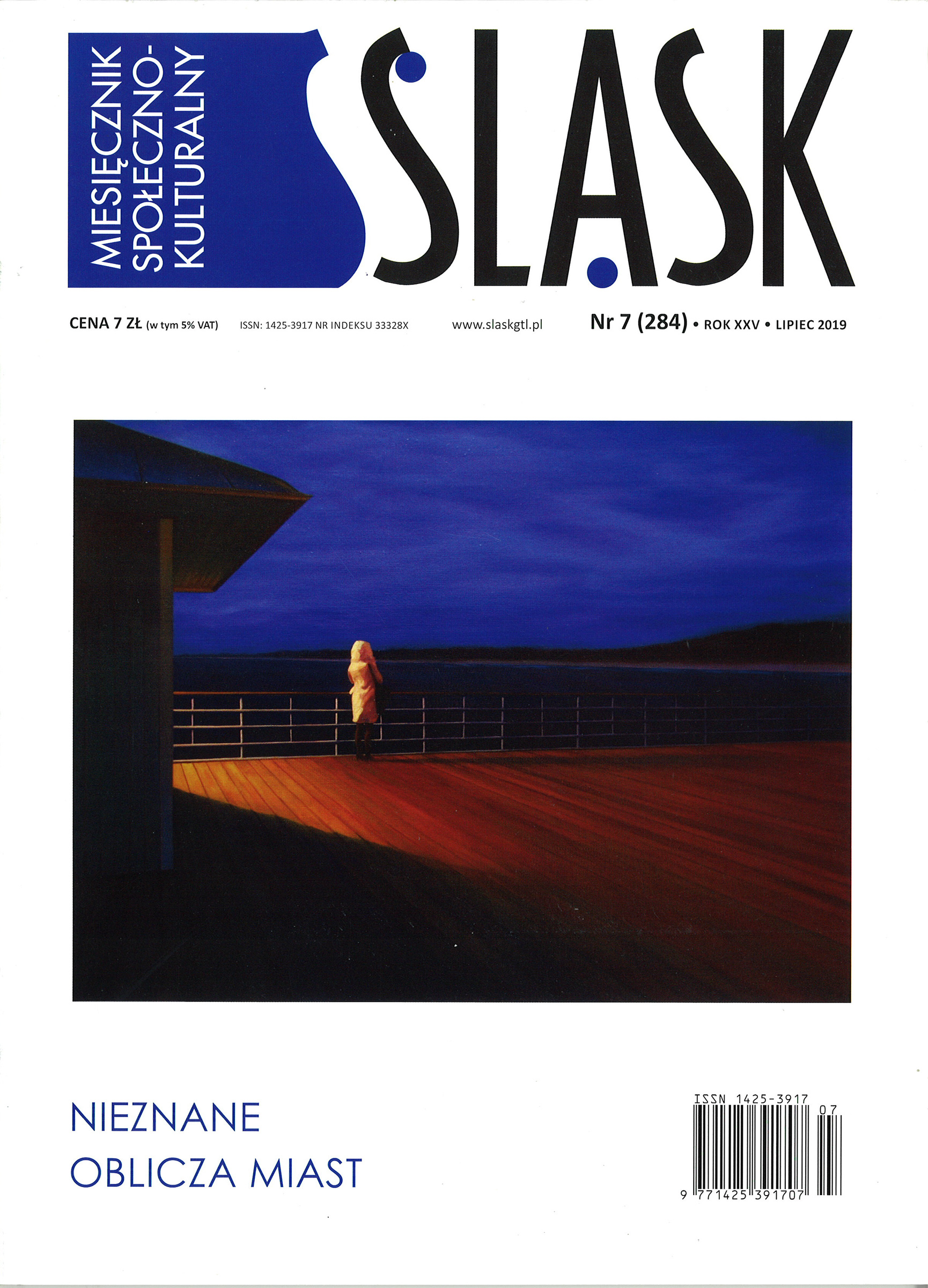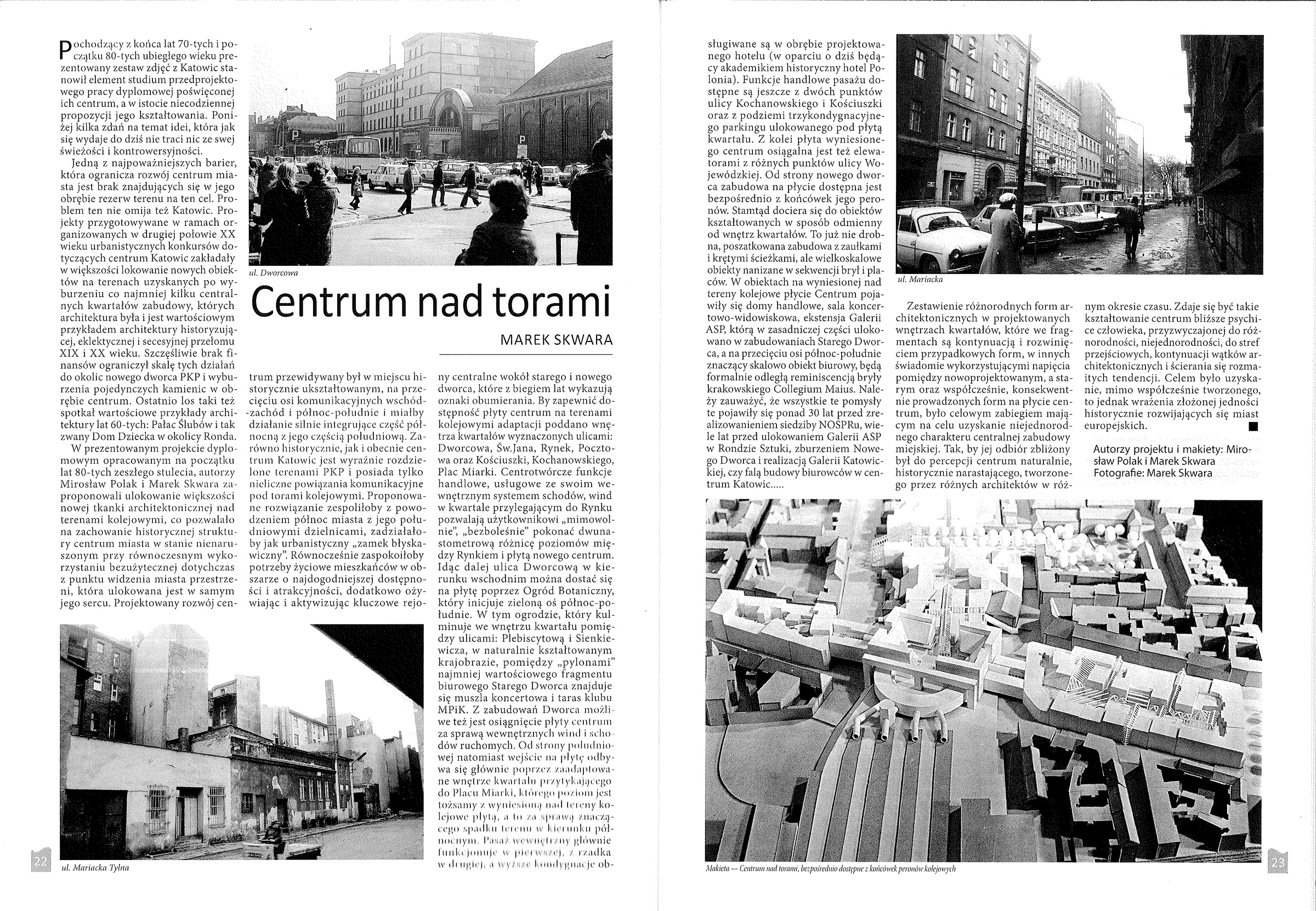Presentation entitled "Center over the Railway" appeared in 07/2019 edition of montly magazine "ŚLĄSK" with "Unknown Face of the City" subtitle. Photos from Katowice of late 70ties and 80ties of the 20th century are accompanied by a study project elaborated by Atelier PS introducing an idea of developing Silesia Conurbation Centre over railway tracks, which even today cut the city into halves.
One of the most serious barriers limiting the development of the city center is the lack of land reserves for this purpose within it. This problem is also present in Katowice. Projects prepared as part of the urban planning competitions concerning the center of Katowice organized in the second half of the 20th century assumed mostly the placement of new buildings in the areas obtained after the demolition of at least a few central quarters of buildings, whose architecture was and is a valuable example of historicizing, eclectic and Art Nouveau architecture at the turn of the 19th and 20th centuries. Fortunately, the lack of finances limited the scale of these activities to the vicinity of the new railway station and the demolition of single tenement houses within the center. Recently, such a fate also befell valuable examples of the 1960s architecture: the Wedding Palace and the so-called Kids' World near Rondo and later a New Railway Station.
W prezentowanym projekcie dyplomowym opracowanym na początku lat 80-tych zeszłego stulecia, autorzy Mirosław Polak i Marek Skwara zaproponowali ulokowanie większości nowej tkanki architektonicznej nad terenami kolejowymi, co pozwalało na zachowanie historycznej struktury centrum miasta w stanie nienaruszonym przy równoczesnym wykorzystaniu bezużytecznej dotychczas z punktu widzenia miasta przestrzeni, która ulokowana jest w samym jego sercu. Projektowany rozwój centrum przewidywany był w miejscu historycznie ukształtowanym, na przecięciu osi komunikacyjnych wschód-zachód i północ-południe i miałby działanie silnie integrujące część północną z jego częścią południową. Zarówno historycznie, jak i obecnie centrum Katowic jest wyraźnie rozdzielone terenami PKP i posiada tylko nieliczne powiązania komunikacyjne pod torami kolejowymi. Proponowane rozwiązanie zespoliłoby z powodzeniem północ miasta z jego południowymi dzielnicami, zadziałałoby jak urbanistyczny „zamek błyskawiczny”. Równocześnie zaspokoiłoby potrzeby życiowe mieszkańców w obszarze o najdogodniejszej dostępności i atrakcyjności, dodatkowo ożywiając i aktywizując kluczowe rejony centralne wokół starego i nowego dworca, które z biegiem lat wykazują oznaki obumierania. Należy zauważyć, że przedstawione pomysły te pojawiły się ponad 30 lat przed zrealizowanieniem siedziby NOSPRu, wiele lat przed ulokowaniem Galerii ASP w Rondzie Sztuki, zburzeniem Nowego Dworca i realizacją Galerii Katowickiej, czy falą budowy biurowców w centrum Katowic…..
Marek Skwara

